Our 12 Best Education Articles in February: Reflections on 700 Days of COVID Chaos, Setting a Bar for Unmasking in Schools, Burying Schools in Record Requests & More
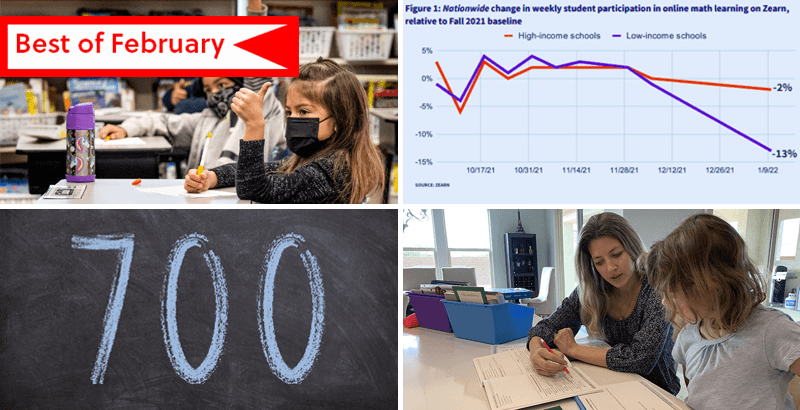
Get stories like these delivered straight to your inbox. Sign up for The 74 Newsletter
Some 700 days after COVID first shut down school districts in the winter of 2020, we spent a good part of February taking a long look back at two years of educational chaos — and looking ahead at how the disruptions and conflicts that defined the pandemic could affect schools and learning recovery efforts in the months and years to come.
From educators’ reflections on two tumultuous years to escalating school board fights over curriculum and transparency and new data surrounding both student reading scores and the benefits of tutoring, here were our most shared articles from February:

Reflections: 700 days. That’s how long it’s been since more than half the nation’s schools crossed into the pandemic era. On March 16, 2020, districts in 27 states, encompassing almost 80,000 schools, closed their doors for the first long educational lockdown. Since then, schools have reopened, closed and reopened again. The effects have been immediate — students lost parents; teachers mourned fallen colleagues — and hopelessly abstract as educators weighed “pandemic learning loss,” the sometimes crude measure of COVID’s impact on students’ academic performance. As spring approaches, there are some reasons to be hopeful. More children are being vaccinated. Mask mandates are ending. But even if the pandemic recedes and a “new normal” emerges, there are clear signs that the issues surfaced during this period will linger. COVID heightened inequities that have long been baked into the American educational system. The social contract between parents and schools has frayed. And teachers are burning out. To mark what will soon stretch into a third spring of educational disruption, Linda Jacobson interviewed educators, parents, students and researchers who spoke movingly, often unsparingly, about what Marguerite Roza, director of Georgetown University’s Edunomics Lab, called “a seismic interruption to education unlike anything we’ve ever seen.”
—Photo History: Scenes from 24 months of lockdown and perseverance (See here)
—Student Relationships: Teens share their tales of romance & friendship 700 days into COVID (Read here)
—74 Interview: Ed finance guru Marguerite Roza on funding, parental ‘awakening’ and being a data person in a time of public health panic (Read more)
—Special Series: See our full coverage — Reflecting on the COVID school years

School District Chaos: In bucolic Owatonna, Minnesota, the head of the school system’s HR department has been working since August to fulfill a request for records anonymous activists believe might reveal the presence of critical race theory in local classrooms. Down the road in Rochester, district officials told another group it would cost more than $900,000 to conduct its document search, which asks for curriculum covering history, social studies, geography, English, English literature, U.S. history and world history, and “any courses with a sociological or cultural theme [and] any courses with a curriculum that includes a discussion of current events.” In tiny Lewiston-Altura Public Schools, some of the activists lodging the requests have protested board meetings. The public has an absolute right to know what’s being taught in schools, freedom of information advocates tell Beth Hawkins, and Minnesota’s “sunshine laws” make asking for records as inexpensive as possible to ensure public access. Still, as one small-town newspaper groused, it’s hard not to see “politically motivated, overreaching demands designed to bury districts.”

Learning Loss: Young children learning to read — especially Black and Hispanic students — are in need of significant support nearly two years after the pandemic disrupted their transition into school, according to new assessment results. Mid-year data from Amplify, a curriculum provider, shows that while the so-called “COVID cohort” of students in kindergarten, first and second grade are making progress, they haven’t caught up to where students in those grade levels were performing before schools shut down in March 2020. This year’s quarantines and short-term closures likely contributed to the slow progress, “For the youngest learners to go to school for two or three days and then be out for 10 — it’s not just picking up where you left off; it’s actually starting all over again,” said Susan Lambert, chief academic officer of elementary humanities at Amplify. Results from fourth- and fifth-graders, however, show greater recovery, with the rates of students meeting benchmarks nearly back to the same level they were in the winter of the 2019-20 school year. Tutoring providers are seeing the impact of remote learning up close. “We have first-graders who can’t sing the alphabet song,” Kate Bauer-Jones told reporter Linda Jacobson.

Research: In the two years that COVID-19 has upended schooling for millions of families, experts and education leaders have increasingly touted one tool as a means for coping with learning loss: personalized tutors. Now, days after the U.S. secretary of education declared that every struggling student should receive 90 minutes of tutoring each week, a new study offers more evidence of the strategy’s potential — and perhaps its limitations. An online tutoring pilot launched last spring yielded modest, if positive, learning benefits for hundreds of middle schoolers. But those gains were considerably smaller than the results from some previous studies, perhaps because of the project’s design: It relied on lightly trained volunteers, rather than professional educators, and held its sessions online instead of in person. “There is a tradeoff in navigating the current climate where what is possible might not be scalable,” study co-author Matthew Kraft told The 74’s Kevin Mahnken. “So instead of just saying, ‘Come hell or high water, I’m going to build a huge tutoring program,’ we might be better off starting off with a small program and building it over time.”
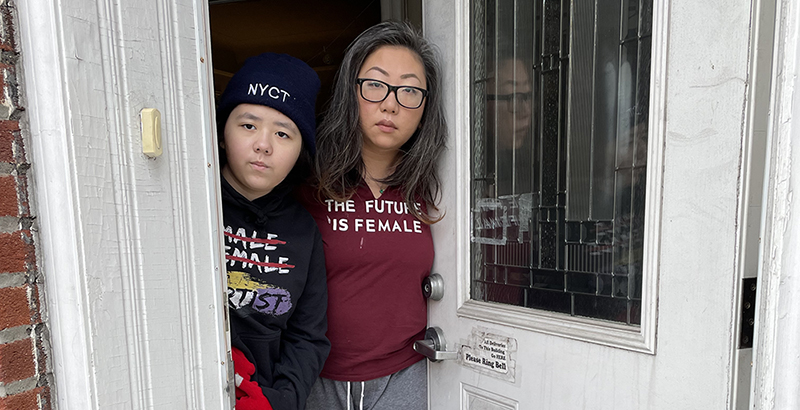
Absenteeism: Paullette Healy’s younger child had nightmares after the knock at the door of their Brooklyn apartment. Standing outside was a caseworker, explaining that the family was being investigated for educational neglect for not sending their children to school amid COVID fears — even though the kids had kept up with their work remotely. The report was one of 9,674 made by NYC school staff for suspected abuse and neglect to the state child abuse hotline from August 2020 to November 2021, according to public records obtained by The 74. In the first three months of the 2021-22 school year, there were about 45 percent more reports than during the same time span the year before, when most of the city’s nearly 1 million students were learning virtually. Now, after NYC student attendance rates plunged in early January amid the Omicron surge, and with ongoing debate over a remote learning option, there are fears even more families may get entangled in the child welfare web. The 74’s Asher Lehrer-Small reports.
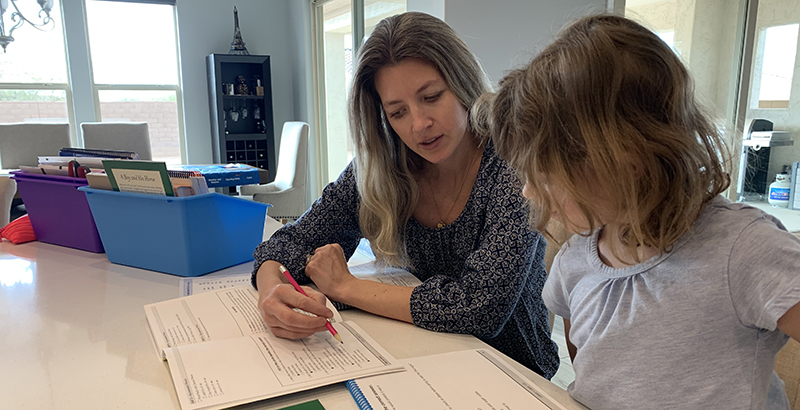
Education Reform: School choice has always relied on a fragile left-right coalition, mostly between Black and Latino activists and centrist-to-conservative legislators pushing to rebalance the public school power structure. The coalition had weakened over the past few years. But COVID-19 is changing that. Fueled by parental impatience with lockdowns, quarantines, and mask and vaccine mandates — as well as curricula that some view as politically charged — there has been a flurry of legislative choice efforts in Kentucky, Missouri, Virginia and West Virginia. “The legislatures are on fire right now for these kinds of things,” said former Florida Gov. Jeb Bush, who chairs the nonprofit reform group ExcelinEd. “And I don’t see it going away.” But as 74 contributor Greg Toppo reports, even as choice backers see fresh opportunity in pandemic chaos, there are early warning signs that the coalition could fracture again. Greg Richmond, a longtime school choice advocate who now leads the Archdiocese of Chicago Catholic Schools, said concerns over so-called critical race theory could be “the Achilles heel” of the current choice renaissance. The new rhetoric, he said, is “not in pursuit of higher graduation rates and test scores,” but “winning the culture war.”

Vax Up, Masks Down: Maryland, Massachusetts Lead Effort to ‘Off-Ramp’ Face Coverings in School
School Safety: As Omicron cases recede in most of the country and K-12 debate turns to whether students should still have to wear masks, two Democratic states have charted a middle path that offers highly immunized districts the option. If more than 80 percent of students and staff are fully vaccinated, Massachusetts and Maryland let districts do away with mask requirements. Maryland also allows an end to masking when case rates remain low. Meanwhile, governors in New Jersey, Connecticut and Delaware all announced this month their school mask mandates will be sunsetting, as soon as Feb. 28 in Connecticut’s case. Their actions follow a growing chorus of experts nationwide calling for mask-optional classrooms. “You cannot mask in perpetuity,” Maryland State Superintendent Mohammed Choudhury told The 74’s Asher Lehrer-Small. “You have to be able to have a responsible off-ramp.”
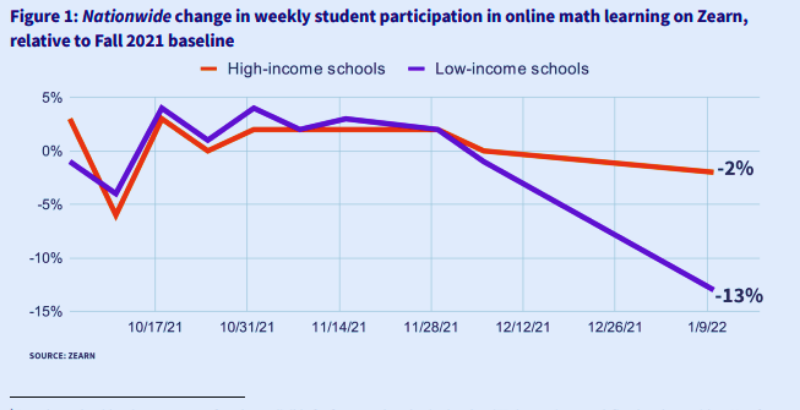
Missing Students: When the latest variant emerged, the data scientists at Zearn saw the same socioeconomic disparities in student use of their math app as they did in the first days of the pandemic. Or so they thought. Just as in March 2020, the number of affluent students using the popular math program remained relatively stable as December’s COVID-19 disruptions plunged schools into chaos, while the number of low-income kids plummeted. But this time, the Zearn team could find no correlation between the dip in student math participation and pandemic-related school closures. Instead, the drop seems to be tied to case counts — the gaps appear to be biggest where COVID-19 infection rates are highest. And kids in the low-income communities are hit hardest. Beth Hawkins has the story.

New National Poll: Americans Split on Whether Schools Should Teach Current-Day Racism
Curriculum: As battles erupt around the country over how the subject of race should be treated in the classroom, a new survey finds Americans are split over whether schools should teach children about current-day racism. It found that 49 percent of 1,200 respondents from around the U.S. believe schools have a responsibility to ensure students learn about the ongoing effects of slavery and racism in America. Meanwhile, 41 percent believe schools should teach students about the history of slavery and racism — but not about race relations today. A full 10 percent said schools do not have any responsibility to teach about slavery or racism in the U.S., according to the latest Mood of the Nation Poll conducted by The McCourtney Institute for Democracy at Penn State. The poll, released today, also addresses the degree to which people believe parents should influence their child’s education — another current flashpoint — the teaching of evolution and sex education, and COVID safety. Across the board, respondents said parents should have the most sway, followed by teachers. Jo Napolitano breaks down the results.

School Segregation: Elementary students from low-income families are less likely than they were two decades ago to attend school with middle-class peers — a trend tied to the growth of the Latino population and continuing white flight from many school districts, according to a new study. In an analysis of over 14,000 districts nationwide, researchers at the University of California, Berkeley, and the University of Maryland showed that in 2000, the average child from a poor family went to an elementary school where almost half the students were middle-class. By 2015, that figure had fallen to 36 percent. The increasing segregation, the authors said, has implications for districts’ efforts to address learning loss related to the pandemic because Latino families were among those hardest hit. Linda Jacobson has the story.

Student Relationships: Online games. Dating apps. Penpals from across the globe. Amid nearly two years of the pandemic, young people at every turn have found creative ways to connect with their friends and potential love interests. Despite what at many times has been a largely virtual world, teens often came out on the other side of lockdown with relationships that were stronger for the experience. Or as one New York City high schooler put it: “If you’ve been through a pandemic with someone, I feel like we’re bonded for life.” From long-harbored crushes to new friends over Zoom, breakups to hookups, and Bumble DMs to online multiplayer games, young people share their experiences of pandemic friendship and romance, brought to you in the form of seven mini-love stories. Asher Lehrer-Small has our Valentine’s Day special.
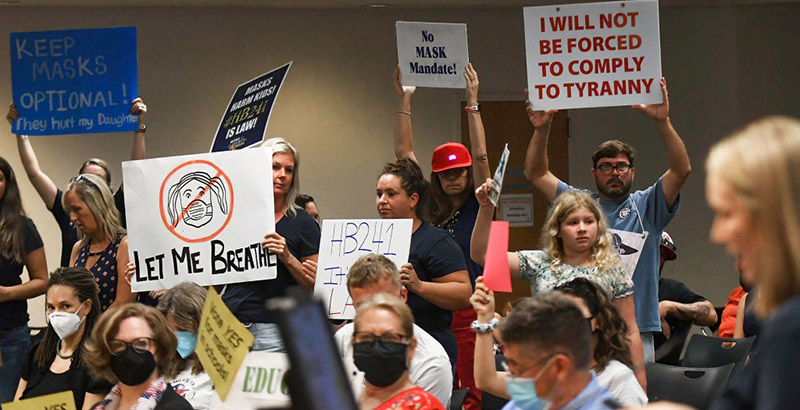
Commentary: The governing of public schools in many communities is nearing total collapse. From coast to coast, fights over book bans, curricula, bathrooms, racial issues, masks, vaccinations and police on campus have torn communities apart and led to angry confrontations, violence and destruction of property. People have resigned from school boards or declared they will not run for office due to the intensity of these conflicts. Meanwhile, problems such as student performance, teacher pay and working conditions, and learning loss during the pandemic remain on the sidelines. To help save one of the oldest forms of governance in this country — predating the American Revolution — contributor Christopher T. Cross suggests a number of actions that every state, every school board, can take to improve the governance of our public schools.
—74 Opinion: See all our latest op-eds and commentary
Go Deeper: Get essential education news and commentary delivered straight to your inbox. Sign up here for The 74’s daily newsletter.
Get stories like these delivered straight to your inbox. Sign up for The 74 Newsletter

;)
